The 6 best air purifiers: I'm a home tech editor with asthma and allergies, and these models excelled in our tests for cleaner air at home
Of the 17 air purifiers we've tested, these are the quickest, quietest, and have the most useful features

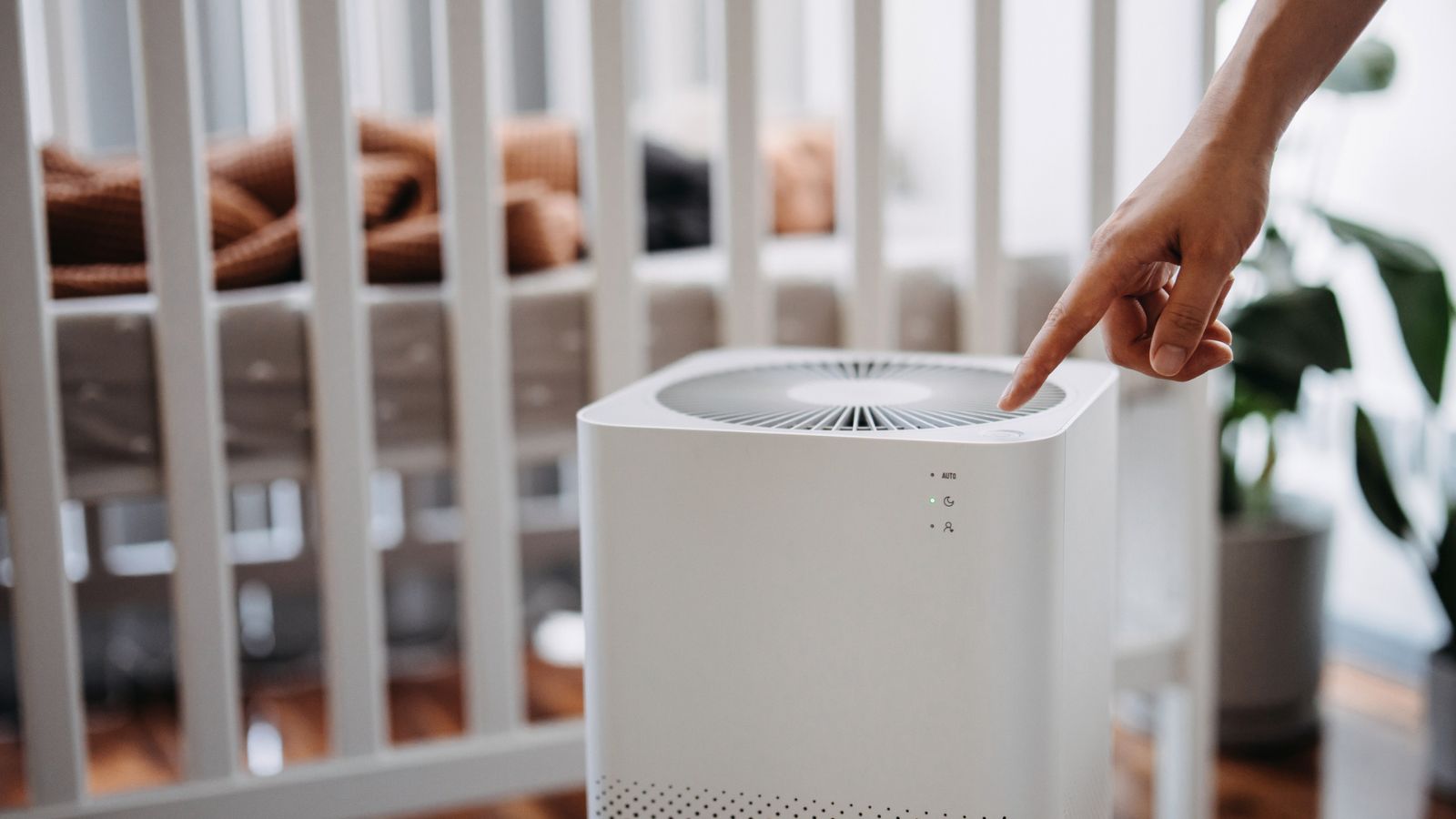
- 1-minute verdict
- Quick list
- 1. Best overall
- 2. Runner-up
- 3. Best air quality
- 4. Best multi-function
- 5. Great value
- 6. Budget pick
- More options
- How to choose
- How we test
- What is a HEPA filter?
- Do air purifiers really make a difference?
- Which air purifier brand is best?
- Do I really need an air purifier?
- Meet the team
From reducing allergies and removing odors to creating that fresh, clean-air feeling, the best air purifiers offer an easy, refreshing upgrade to our indoor spaces.
And as somebody with allergies and asthma, a good air purifier is more than a luxury, it's vital to my health. That's why we've spent more than 150 hours testing the best models to find effective ways to improve your indoor air quality.
We've tested 17 of the best air purifiers and narrowed them down to the only six you need to consider, based on coverage, speed, noise levels, filtration and price.
One-minute verdict
The best air purifier that we've tested is the Shark NeverChange Air Purifier MAX, as it covers a huge 1,400 square feet, can neutralize odors with a fresh-smelling cartridge, and has washable filters that avoid replacement filter costs for up to five years. I still use it in my own home a year after testing.
But the Coway Airmega Mighty is a close second. It's priced similarly, but the purifier's smaller design and larger coverage means it's taking up much less space in your home, making it great for renters and those in small spaces. It looks more visually appealing than some of the others, which is a bonus.
You can spend a little extra and enjoy the purest air purification available with the Molekule Air Mini+, which can actually destroy these harmful particles rather than capturing them. I use this air purifier in my bedroom every night and it's worked wonders on my allergies and asthma.
Whereas before I was waking up most nights from some kind of allergy or asthma symptom, I now sleep deeply almost every night, and wake up breathing clearly every morning.
Other top picks include the Shark 3-in-1 with a fan and heater, or the budget-friendly options of the Coway Airmega Aim and the Levoit Core 300, which are more basic models that still do a decent job of purifying the air without smart features.
The quick list
I'll get into the specifics in a minute. For now, these are the best air purifiers at a glance.

Best air purifier
The Shark NeverChange Air Purifier MAX can cover spaces up to 1,400 square feet with smart air quality detection. Cleanable filters avoid any filter replacement costs for up to five years, which is when the manufacturer recommends a new one. I've been using it in my home for over a year now.

Runner-up best air purifier
For a similar price as the Shark NeverChange MAX, the Coway Airmega Mighty can cover even more space while taking up less space itself. It also releases negative ions into the air that make pollutants easier to capture.

Best air purifier for pure air quality
The Molekule Air Mini+ captures and destroys allergens while giving you detailed insight into the particles it detects in your air. It's the air purifier I use in my own bedroom.

Best multi-function air purifier
The Shark Air Purifier 3-in-1 has three modes: purified air, purified heat, and purified cooling. It purifies and changes the temperature of a room quickly and effectively, and, for three appliances-in-one, it's well-priced.

Best value air purifier
The Coway Airmega Aim packs a punch at just over $100. With a fan that rotates horizontally and tilts vertically, you can aim where you need the purified air.

Best budget air purifier
With the Levoir Core 300, you can purify a 350 sq. ft. family room in as little as 20 minutes. This machine incorporates QuietKEAP technology to minimize noise and air resistance: all that for less than $100.
The best air purifiers
The best air purifier

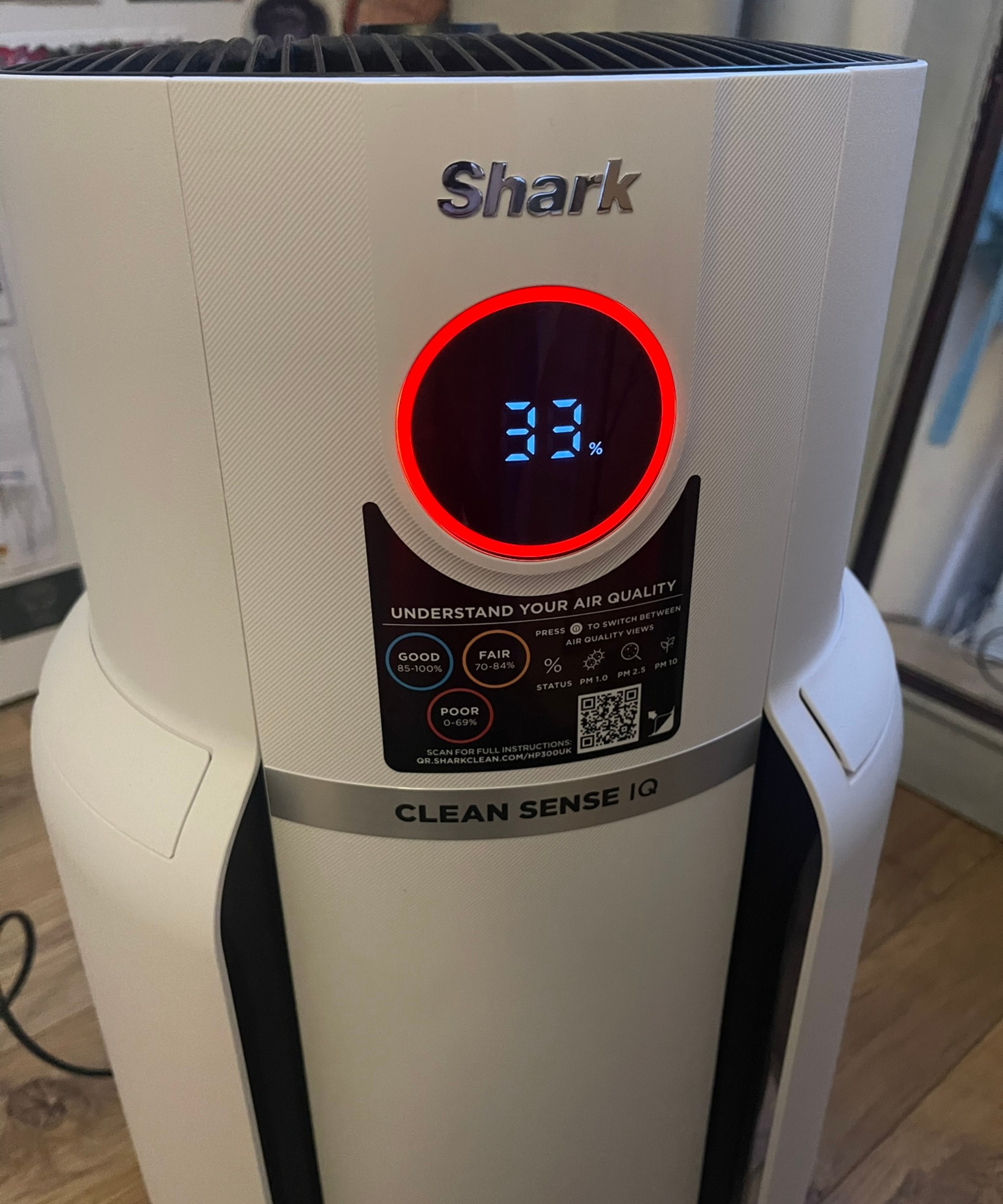




1. Shark NeverChange Air Purifier MAX
Best air purifier overall
Coverage: Up to 1,400 sq. ft. | Filter: HEPA & Debris Defence pre-filters | Dimensions: 13.2L x 13.2W x 22.5H inches | Weight: 12.27093 lbs
Outside of its excellent performance on tests, the Shark NeverChange Air Purifier MAX boasts something new in the world of air purifiers. It has pre-filters, which Shark refers to as Debris Defence filters, that are wipeable and washable, protecting the HEPA filter within.
Because of this, the NeverChange MAX's filter doesn't need to be replaced for up to five years, avoiding those recurring replacement costs that most air purifiers demand. It also makes things easier when it comes to cleaning your air purifier.
Not only is the NeverChange MAX the best air purifier overall, but it's also the best for large spaces. At 1,400 square feet, it has the biggest coverage of any air purifier we've tested, and I found that it covers large spaces exceptionally well. After a long cooking session, the air purifier had cleaned the entire upstairs' air quality from 33% to 100% in under 30 minutes.
The air purifier's front display shows your room's air quality as a percentage. This is thanks to Shark's Clean Sense IQ detection tech, which also detects the number of PM1, PM2.5, and PM10-sized particles in the air. This data might not be as detailed as the Molekule Air Pro's, but it's enough to see how at-home activities like vacuuming, cooking, or opening the windows can affect your air quality, particularly in a city.
For any product to be the best, it has to be accessible as well as offering helpful features. The NeverChange MAX currently retails for just over $300, which is hundreds of dollars cheaper than some of the other premium air purifiers we've tested (like the Dyson Purifier TP09 and the Molekule Air Pro).
Its plastic aesthetic might not be attractive for everybody, but this is the kind of air purifier that'll genuinely make a big difference at home while being affordable in both initial and recurring costs.
Read our full verdict in our Shark NeverChange Air Purifier MAX review.
Runner-up best air purifier

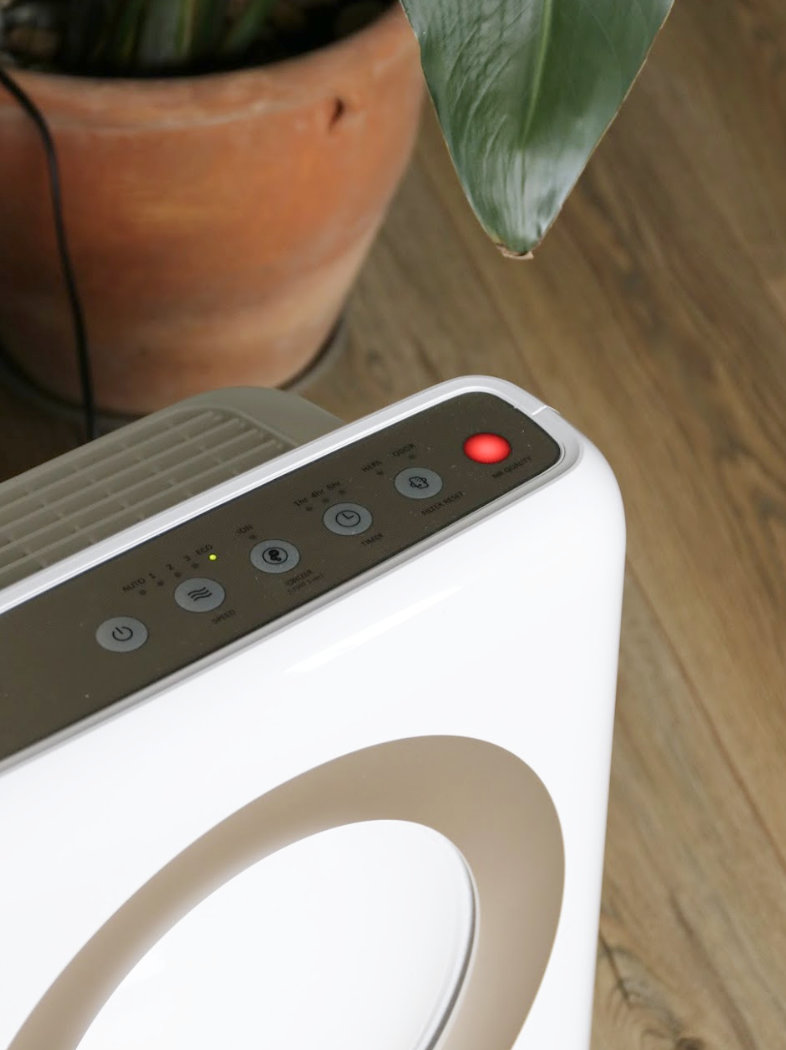

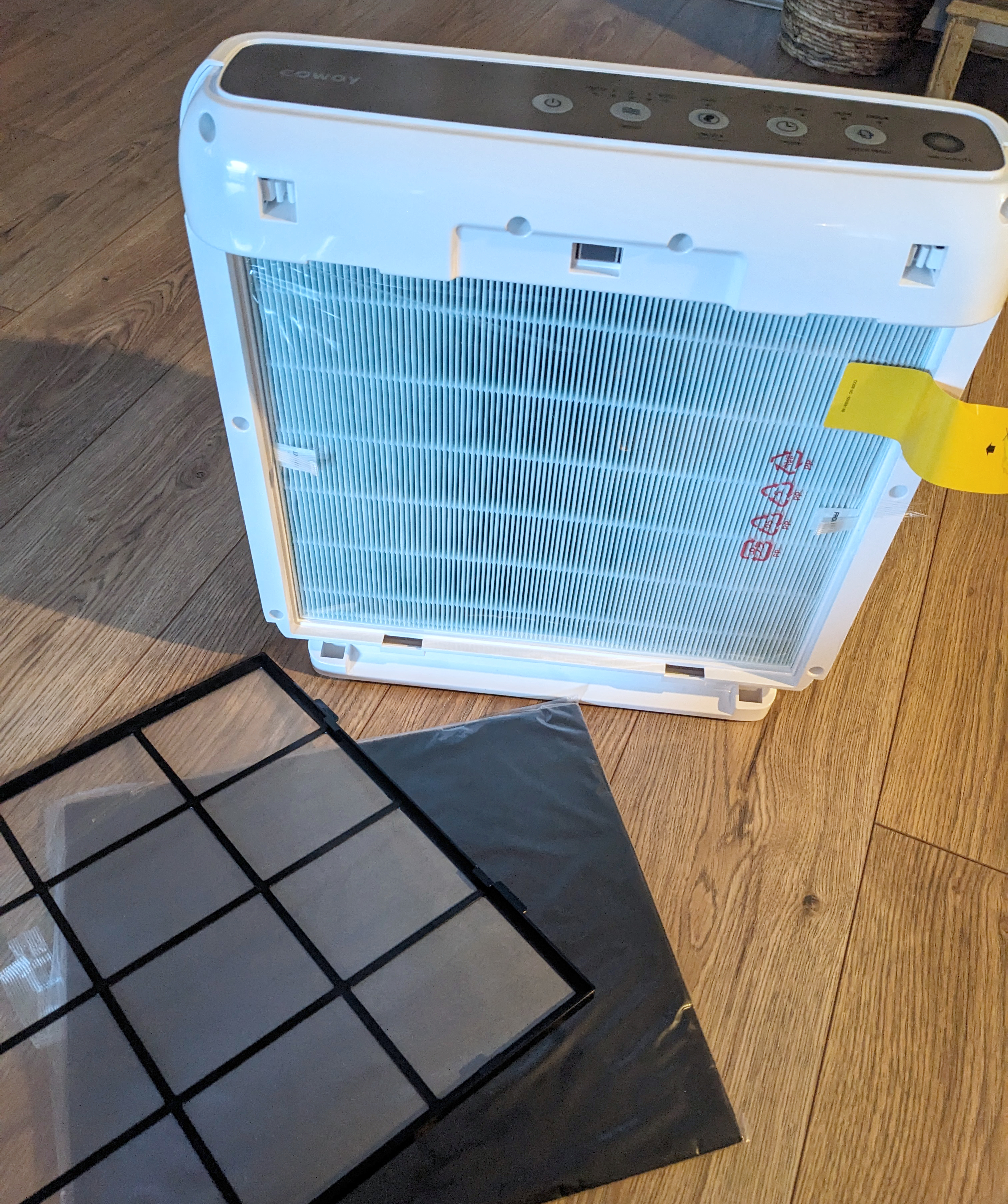
2. Coway Airmega Mighty
Runner-up best air purifier with effective, powerful cleansing
Coverage: 1,748 sq. ft. | Filter: Pre-filter + Deodorization filter + True HEPA filter + Vital Ionizer | Dimensions: 16.8 x 18.3 x 9.6'' | Weight: 12.3 lbs
Considering its compact size, easy price point, and thin design, the Coway Airmega Mighty can cleanse the air of impressively large spaces – up to 1,748 square feet to be exact. That's more than the best air purifier in our guide, the Shark NeverChange MAX, which is much taller and bulkier.
To combat the common mistakes lowering your air quality, such as cooking or lighting candles, the Airmega Mighty is equipped with four filtration technologies, including a 'Vital Ionizer' that emits negative ions into the air and attaches to pollutants. This makes them larger and therefore easier for the HEPA filter to capture.
The purifier also actively deodorizes your space and helps reduce your allergies. As tester Gabriella Dyson wrote, 'I quickly noticed that I was no longer suffering from my usual pet hair allergies. What's more, the room's 'catty' odor, which I thought I had gone nose blind to, was all but gone.'
When it comes to cooking and neutralizing kitchen odors, Gabriella tested the Airmega Mighty next to her stovetop: 'Within 30 seconds of frying food, the machine turned from blue (indicating clean air) to red (indicating highly polluted air). I was impressed to watch as the machine faded from red to dark purple and back to blue again over a few short minutes.'
Its noise levels are what you'd expect from most standard purifiers. It emits around 38 decibels at its quietest and can go as loud as 58 decibels on its highest setting, which is still quieter than running one of the best cordless vacuums.
Read more in our full Coway Airmega Mighty review.
Best air purifier for the purest air quality




3. Molekule Air Mini+
Best air purifier for the purest air quality, at a price
Coverage: Up to 250 sq.ft. | Filter: PECO, HEPA, Carbon | Dimensions: 8.26 x 8.26 x 12'' | Weight: 7.3 lbs
This is the air purifier I keep running in my own bedroom almost every day. The little machine can only cover up to 250 square feet, but if you know the best place to place your air purifier, this is plenty for individual rooms.
Most air purifiers incorporate HEPA filtration technology to capture all sorts of small particles and pathogens. But the Air Mini+ has a HEPA filter and a PECO filter, too, which actually destroys pollutants at a molecular level.
This machine breaks down dust mites, mold spores, bacteria, viruses, and more and turns them into harmless gases like carbon dioxide and water vapor. For this reason, it's one of the only consumer air purifiers in the world that's FDA-approved as a Class II medical device.
Day-to-day, this air purifier is fantastic at making sure my bedroom air stays clean. I live near a city center and I'm an allergy sufferer, and whenever smoke, pollen or dust comes in from outside, the Air Mini+ quickly removes it. If you compare air purifiers vs plants, air-cleaning indoor plants can't keep up with this level of purification.
The Air Mini+ keeps track of each impurity it encounters and logs them all in the Molekule app, under 'Air History'. Here, you can view the changes to particle levels in the last five minutes or over the past four weeks.
The Air Mini+ works hard and keeps noise to a minimum, with a noise range of around 39-62 dB depending on the speed setting. That's somewhere between a whisper and a normal conversation. At its lowest speed setting, the Air Mini+ is barely audible, but I will say that, on speed settings three or higher, it can impact my sleep, and I'll often wear earplugs to block it out.
It's also quite expensive. At $339, this tiny purifier is more expensive than the others in this guide that can cover more ground or offer multi-functionality. If you're looking for a larger room coverage, you could also opt for the Molekule Air Pro, the full-sized version of the Air Mini+, but even though it wowed us on test, it costs more than $1,000.
Read more in our full Molekule Air Pro review.
Best multi-function air purifier




4. Shark Air Purifier 3-in-1
Best multi-function air purifier for cooling and heating
Coverage: 500 sq. ft. | Filter: HEPA | Dimensions: 10.43 x 10.43 x 23.62'' | Weight: 12.8 lbs
The Shark Air Purifier 3-in-1 combines three separate appliances: an air purifier, a fan, and a heater. Moreover, rather than just blowing warm or cold air, it produces purified heat and purified cooling, taking it a step further than traditional fans and heaters, and is one of the cleanest and fastest ways to cool your house.
Considering this is three appliances in one, a retail price of $399.99 is more than reasonable. Our tester Aleenah Ansari found that, aside from being able to cool you, the fan mode was excellent at airing out rooms, particularly the kitchen after a long cooking session.
The heater works quickly; it was able to raise the temperature of an 80 square foot room by 4 degrees in 9 minutes. The temperature change was more noticeable than typical space heaters she's used in the past.
The purifier itself is powerful and 'virtually silent,' and was not at all distracting when on calls, cooking or reading. After the air quality had lowered down to 60%, it was able to reach 100% in 30 minutes.
The Shark Air Purifier 3-in-1 oscillates across all three of its modes (fan, heat and air). Air purification happens in all modes, but in eco mode it'll automatically adjust based on the room's air quality, and return to the lowest setting once it's reached 100%.
This is everything you'd need from an air purifier, and more. It is however limited to room sizes of 500 square feet, and lacks handles for easier carrying from room to room.
Read more in our full Shark Air Purifier 3-in-1 review.
Best value air purifier


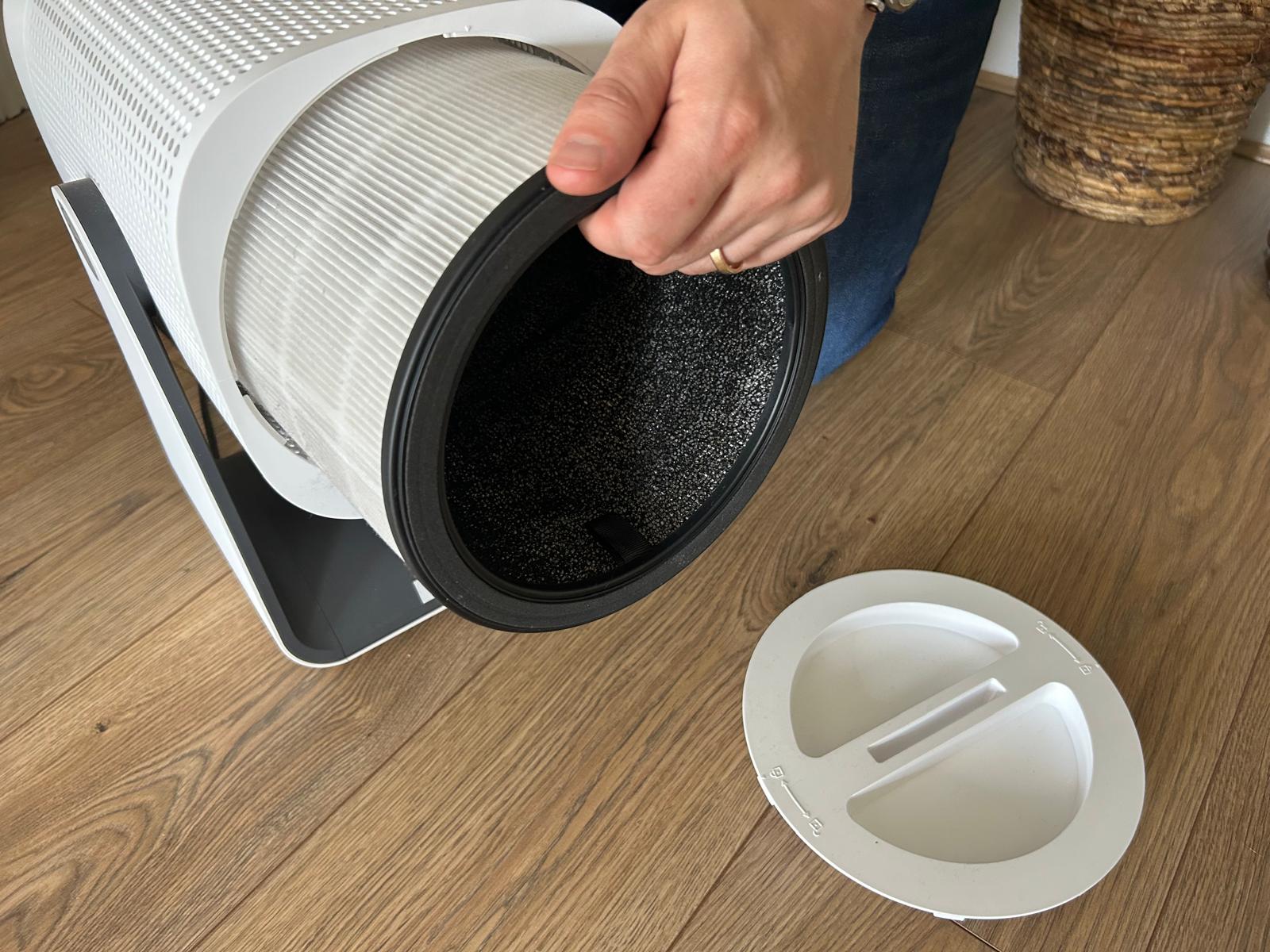
5. Coway Airmega Aim
Best value air purifier
Coverage: Up to 492 sq.ft. | Filter: Pre-Filter + True HEPA filter + Deodorisation filter | Dimensions: 7.8 L x 19.6 W x 18.5 H inches | Weight: 7.275 lbs
The Coway Airmega Aim has powerful filtration for the price. Utilizing pre filters, a True HEPA filter and a deodorization filter, the air purifier is equipped to deal with everything you'd expect from one, without the $100s+ price tag.
It looks a little different from many common air purifiers. It doubles up as a fan, allowing the air purifier to blow cold air where you need it. It can oscillate up to 80 degrees and tilt vertically up to 90 degrees, and our tester Gabriella found that 'when the unit is aimed downwards, it pulls pet hair and micro particles up and purifies them.'
She also noted a significant reduction in unwanted smells, particularly from her cat's food bowls and bedding. And, 'the unit operates extremely quietly, especially in auto and eco mode,' although for the purifier to cool you effectively, it'll need to be set to airflow speed 3, which becomes a bit noisy.
With budget-friendly purifiers, you can also use an air quality monitor to test for air quality without forking out on a super-expensive purifier that does both.
But the bottom line is that the Coway Airmega Aim does a great job of improving indoor air quality, removing dust particles from the air, and overall contributing to a cleaner living environment – all for just over $100. Plus, it looks a lot less bulky than most other air purifiers.
Read more in our full Coway Airmega Aim review.
Best budget air purifier

6. Levoit Core 300 True HEPA Air Purifier
Best budget air purifier
Coverage: Up to 430 sqft | Filter: HEPA, Carbon | Dimensions: 14.1 x 8.6" | Weight: 9.2lbs
The Levoit Core 300 costs less than $100, almost unheard of for an air purifier. It may not have the power or the smart features of more expensive machines, but it's a highly effective cleaner for small apartments and single rooms that will improve your air quality.
This machine is a foot tall, a foot wide, and weighs less than eight pounds. It's light enough to sit on your tabletop, which makes it easy to lift and move from room to room for whole-house cleaning.
This purifier features a high-efficiency activated carbon filter, which neutralizes smoke, fumes, and household odors, as well as trapping all the usual particles and pathogens.
There's no Levoit app or smart interface, but the Core 300 isn't witout features. It still has a sleep mode that runs at just 24 dB, much quieter than most of the purifiers in this guide. You can even enjoy (mostly) hands-free operation when you set a 2-8 hour timer.
This is an old-school air purifier. You don't need to touch a screen or speak to your smart assistant to make it work. All you need to do is press a button. The Levoit Core 300 may not be as powerful, but it performs exceptionally at its price point.
Our full Levoit Core 300 review is coming soon.
More air purifiers to consider
Our top six is all you need to consider if you're bringing a new air purifier into your home, but we've tested plenty of others that will also cleanse your home's air. If these are on your shortlist, here's our conclusion on their performance.
- The Dyson Purifier Cool TP09 is a smart, sleek appliance that offers tremendously thorough air quality information, whole-room coverage and a bladeless tower fan. Its main downside is its $500+ price point, though.
- The Molekule Air Pro is the larger, more expensive version of the Molekule Air Mini+ in this guide, covering up to 1,000 square feet. It features Molekule's unique pollutant-destroying technology, but you're going to have to pay more than $1,000 for that privilege.
- The Dreo MC710S is an excellent tower fan and air purifier, but it's larger and louder than the Shark Air Purifier 3-in-1 in this guide, and it doesn't have a heater. I can confirm however that it does look slick and high-tech in a living room.
- The Dyson Purifier Humidify + Cool is a multi-function air purifier, fan and humidifier, but it costs a whopping $900 at full price. But if your home often has dry air, this could be an air quality savior.
How to choose the best air purifier
We've written an in-depth guide on what to look for in an air purifier. If you don't have time to read the whole thing, here are a few key points to consider.
Coverage: Even the best air purifiers can't clean all the air in your house. You'd need to invest in a whole-home filtration system for that. Air purifiers are designed to cover a specific room coverage, ranging from around 100 square feet to more than 1,000 square feet. Finding an air purifier that slightly exceeds your desired space will mean it performs at its best.
'Purifiers work best when they’re appropriately sized for the room. For example, if you have a 250-square-foot room, an air purifier rated for up to 300 square feet would provide the best performance,' explains Josh Mitchell, HVAC technician from Air Conditioner Lab.
Filtration: 'When it comes to filtration, HEPA (High-Efficiency Particulate Air) filters are among the most effective. True HEPA filters capture 99.97% of particles as small as 0.3 microns, which includes many allergens like dust, pollen, and even some light smoke particles,' Josh says. It's the same reasons why the best HEPA vacuums are a must for anybody with allergies.
'This level of filtration is particularly beneficial for those with allergies, asthma, or any minor respiratory issues. HEPA filters are ideal because most indoor pollutants fall within this particle range, offering consistent and reliable air cleaning.'
Purifiers can also have other filter types, using activated carbon or UV-C light to deal with other airborne substances. As Josh explains:
- Activated carbon filters: 'These filters are good for absorbing gases and odors. While HEPA filters capture particles, carbon filters absorb chemicals and volatile organic compounds (VOCs) from paint, cleaning products, and even cooking odors. Combining a HEPA and carbon filter is helpful and my recommendation for spaces where chemical odors or smoke are an issue.'
- UV-C light: 'Some air purifiers include UV-C light to kill bacteria and viruses. While not a replacement for HEPA or carbon, UV-C can add an extra layer of air cleaning, especially in high-traffic areas. Ensure the air purifier is certified as safe since UV-C light can produce ozone if not properly contained.'
Filters don't last forever, so make sure to note replacement costs when making your decision. As they'll need replacing every 6-12 months, this should be factored into the overall spend, so check the purifier's website to find out the costs. Regularly cleaning your air purifier and its filters will minimize these recurring costs.
Noise: 'Air purifiers vary in noise output, which can be an issue in bedrooms or offices. Most models list a decibel rating, so if sound is a concern, look for purifiers with a “quiet mode.” For example, an air purifier with a noise level of 30-40 decibels is typically as quiet as a whisper, making it ideal for a bedroom or office,' Josh says.
At full power, some air purifiers can go as loud as 90 decibels, which is louder than some vacuum cleaners. Anything over 85dB over a prolonged time and with regular usage can damage hearing. Manufacturers will typically display the complete decibel range.
Performance: An air purifier's performance is the result of its fan speed, filtration type and CADR (Clean Air Delivery Rate).
'CADR measures how quickly an air purifier can clean the air of particles like smoke, dust, and pollen. Each type of particle gets its own CADR score, and higher numbers indicate faster air cleaning. For example, a CADR of 200 for smoke means the purifier can clean that volume of smoke particles within a minute,' Josh explains.
'A general rule is to look for a CADR that’s at least two-thirds of your room’s square footage. For example, if your room is 300 square feet, a CADR of around 200 for smoke, dust, and pollen is suitable. CADR shows how quickly the air purifier will clear the air in a given space.'
Compare air purifiers vs air ionizers and air purifiers vs air scrubbers to find the purification system that's best for your home.
Certifications: Keep an eye out for ratings from the Association of Home Appliance Manufacturers, which uses the Clean Air Delivery Rate to measure a purifier's energy efficiency. The higher the rating, the more efficient the machine. Josh outlines the certifications to look out for:
- AHAM Verified: 'The Association of Home Appliance Manufacturers (AHAM) verifies air purifiers for Clean Air Delivery Rate (CADR), helping consumers understand how quickly a unit can remove specific particles like dust, smoke, and pollen. AHAM-certified products undergo independent testing to ensure the CADR rating is reliable.'
- ENERGY STAR: 'ENERGY STAR-rated models are energy-efficient, saving you money if you continuously run the air purifier. Since air purifiers can consume significant power, choosing an ENERGY STAR model helps with long-term costs.'
- CARB Compliance: 'CARB compliance is important if you live in California or are concerned about ozone levels. The California Air Resources Board sets strict ozone emission standards for purifiers. CARB-compliant models are ozone-safe, which is especially important if you have respiratory sensitivities.'
Cost: The best air purifiers can cost anything between $100 and $1,500. Then there's the price of filters, which need to be replaced around every six months to a year (unless they are washable) and cost between $30 and $150. Budget air purifiers like the Levoit Core 300 (at Amazon) won't have smart features or app integration, but if you're limited on money, they're great alternatives to cover small rooms like a bedroom or office.
If money isn't an issue, a whole-home filtration system might be a smarter option. This will save you from moving your purifier around the house or investing in multiple to keep in different rooms.
'A whole-home filtration system might be the answer for those wanting to purify the air throughout their entire home. These systems, which connect directly to your HVAC, generally range from $1,500 to $5,000, including installation. Upgraded options, such as HEPA or carbon-based filtration add-ons, can increase costs,' Josh explains.
'For instance, a HEPA filter add-on could raise the total price by $500 to $1,000, depending on the type of filter. Maintenance costs should also be considered, as the filters typically need to be replaced annually to maintain effectiveness. For example, a replacement HEPA filter for a whole-home system can cost between $100 and $300, depending on the model.'
How we test air purifiers

We put a lot of thought into how we test home technology such as air purifiers, and we try to test as many as we can. We use these machines in our homes for several weeks, if not months, to monitor their real-world performance over time.
We record the whole process, from unboxing and setup to cleaning, to give you a good sense of what it's like to use and maintain each of the best air purifiers.
We rank each product based on coverage, performance, design, noise and price. When assessing coverage, we want to know that the best air purifier can cover the area it claims to, and we can test for this by spraying deodorant or lighting an incense a certain number of meters away, and seeing whether the purifier picks it up.
Performance is tested by how quickly and efficiently the appliance can purify the air. Usually, there'll be an air quality indicator, so we can track how long it takes for the purifier to, say, change the air quality from 30% to 100%. This reflects the purifier's fan speed, purification efficiency, and the Clean Air Delivery Rate.
An air purifier can cost anywhere between $200 and $1,500. More expensive purifiers can cover larger areas, have more detailed air quality insight, or have additional functions such as heating or cooling. We assess whether the price reflects the performance and features on offer.
FAQs
What is a HEPA filter?
HEPA stands for 'high-efficiency particulate air' filters. Made from fiberglass or polypropylene and woven into pleats, these filters can trap dust, pollen, mold, bacteria, and all sorts of airborne particles.
As mentioned above, these filters can remove more than 99.97% of polluting particles as small as 0.3 microns – which makes up many of the indoor pollutants we have in our homes including dust and dander.
Do air purifiers really make a difference?
Yes, absolutely. I can attest to this on a personal level. I test home tech products including air purifiers and vacuums for a living so I'm tuned-in to products that are gimmicks – and an air purifier is not one of them.
Using one of the best air purifiers in my home has massively reduced my allergies, improved my asthma, and generally created a more pleasant and comfortable environment. I will always use one moving forward.
You can monitor the effects after cooking, for example, where fried food and cooking gases will drop the air quality below 50%, then watch as the air purifier removes those contaminants from the air.

Which air purifier brand is best?
It varies. Many air purifier brands such as Blueair, Levoit and Mila offer similar products with similar features. If you look at the specs, you'll find differences in coverage and fan speed, and perhaps features, but they achieve a similar goal.
If you're looking for the absolute best air purifier, you'll need brands that add something extra to theirs.
For instance, Molekule's air purifiers are some of the only in the world that are FDA-approved as Class II medical devices thanks to their patented PECO tech that actually destroys pollutants at the molecular level, which is something no other air purifier brand offers.
But others from Shark and Dyson offer useful multi-functionality, including purified heat, cooling or humidity features, so 'the best' largely depends on what your priority or needs are.
Do I really need an air purifier?
We've written a whole feature on whether air purifiers are worth it. An air purifier isn't a necessity, of course, but it can improve your health and comfort at home. The best air purifiers can circulate fresh air around a room and remove harmful particles or pollutants.
The air in your home is typically infested with irritants such as mold spores, bacteria, dander, and dust. The right air purifier can limit the spread of these pollutants, alleviate allergies, and even reduce odors from cooking, pets, and smoke.
Meet the team

I'm the home tech editor for Homes & Gardens and have been testing and writing about products since 2021. As an asthma and allergy sufferer, I'm conscious of the air quality in my room and understand the importance of an effective air purifier. I've reviewed the Shark NeverChange Air Purifier MAX and the Molekule Air Mini+ in this guide.

Gabriella Dyson is our former Head of Solved, writing and commissioning countless articles and features across cleaning, decluttering and air quality. She tested the two Coway purifiers in this guide.
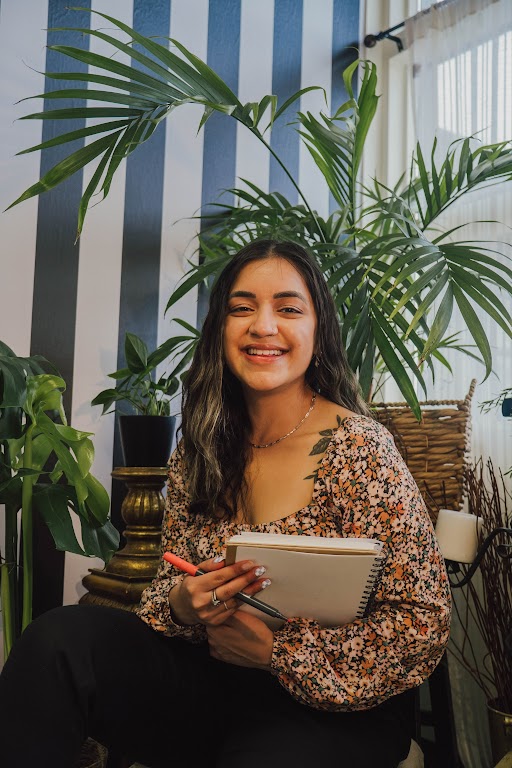
Aleenah Ansari is a freelance writer covering travel, wellness, and tech products. She tested the Shark 3-in-1 Air Purifier in this guide.
If these machines just aren't for you, but you're still keen to clean the air in your home, then it's worth learning how to improve air quality indoors − even without an air purifier.
Or, compare air scrubbers vs air purifiers to see which will work best in your home.
Design expertise in your inbox – from inspiring decorating ideas and beautiful celebrity homes to practical gardening advice and shopping round-ups.

Dan is the Home Tech Editor for Homes & Gardens, covering all things cleaning, sound, smart home, and air treatment across the Solved section.
Having worked for Future PLC since July 2023, Dan was previously the Features Editor for Top Ten Reviews and looked after the wide variety of home and outdoor content across the site, but their writing about homes, gardens, tech and products started back in 2021 on brands like BBC Science Focus, YourHomeStyle and Gardens Illustrated.
They have spent more than 400 hours testing and reviewing vacuums, soundbars and air purifiers for Homes & Gardens.
Dan has a BA in Philosophy and an MA in Magazine Journalism. Outside of work, you'll find them at gigs and art galleries, cycling somewhere scenic, or cooking up something good in the kitchen.